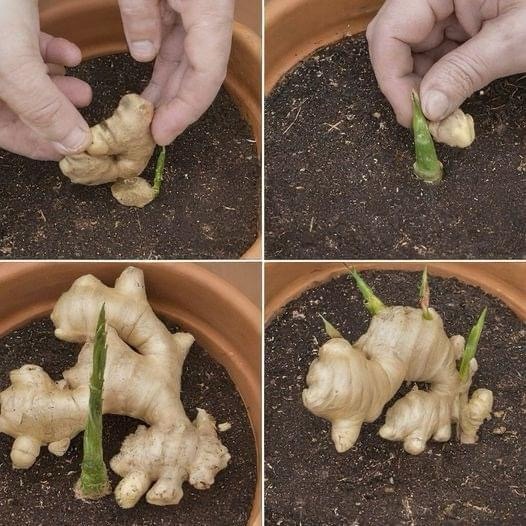Do you hate having to go to the shop so often to purchase ginger? Who says you can’t grow your own? You can’t go wrong with ginger as a homegrown ingredient because of its wonderful taste and many health advantages. Planting ginger is an enjoyable and long-term project, regardless of whether your garden is large or little. If you know the appropriate tricks, you can have fresh ginger on hand all the time.
To begin, get a fresh ginger rhizome from a trustworthy vendor. Thick, solid rhizomes with “eyes” or buds for development should be sought for. Because it does not include any additives that might stunt its development, organic ginger is superior.
The ginger rhizome has to be soaked in water for the night before planting. To get the rhizome started growing, this helps hydrate and stimulate it.
Pick a container with a depth of at least 12 inches to support the ginger rhizome as it grows in a pot. To avoid flooding, check that it has drainage holes. The ideal location for a garden is one that has partially shaded areas and soil that drains effectively.
Ginger grows best in organically rich, loose soil that drains properly. When you want better drainage and fertility, mix in some compost or old manure.
Heads up while planting the ginger rhizome in soil. Make sure there’s room for each piece to develop by burying it an inch or two deep. When planting rhizomes in a container, make sure to provide at least a few inches of space between each.
THAT PICK YOUR CUP
Be cautious not to water the soil too much, but make sure it stays constantly wet. It is essential to water ginger regularly since it likes humidity. It is important to avoid submerging the plant.
While ginger grows well in mild climates, its fragile leaves could be burnt by intense sunshine. Put the planter somewhere that gets some shade or filtered sunshine for a couple of hours every day to give it some partial shade.
The tropics and subtropics are ideal growing conditions for ginger. You may bring your ginger plant indoors during the winter if you reside in a colder climate by planting it in a container. Grow at a temperature of 75 to 85 degrees Fahrenheit, or 24 to 29 degrees Celsius.
When your ginger plants are actively developing, you should fertilize them with a balanced organic fertilizer every four to six weeks. Foliage and rhizome growth are supported by these nutrients.
To keep the soil wet, prevent weeds, and keep the ginger plants at a consistent temperature, spread a layer of organic mulch around them. Mulch may be made great using straw, wood chips, or even compost.
Take a look at this
Be patient and let the ginger develop at its own speed since it takes time to mature. In most cases, new shoots won’t emerge from the ground for at least a few of weeks. Although it may take 8 to 10 months for ginger plants to reach maturity, you have the option to pick young ginger sooner if preferred.
The harvesting of ginger may begin after the plants have reached maturity. To find the rhizomes, carefully dig around the plant. Harvest what you need while letting some seeds remain in the ground for future growth. To ensure a steady supply, remember to plant again.
Thoroughly washing and drying the rhizomes is necessary for storing obtained ginger. You have two options for storing them: either in a cool, dry spot or in a plastic bag inside a paper towel for refrigeration. They stay fresh for weeks with this method.
Your ginger plants will produce additional rhizomes as they mature. You may divide these rhizomes and plant them again to grow more ginger or give them to someone else who loves gardening.
One of the most multipurpose cooking ingredients is ginger. Sweets, pastries, curries, stir-fries, and more may all benefit from its use. Try some new dishes as you enjoy the one-of-a-kind taste of your homegrown ginger.
One of the many benefits of growing ginger at home is the opportunity to savor the root’s taste and freshness. You can grow ginger in a container or garden if you follow these guidelines. Enjoy the bounty of your own garden while infusing your dishes with the zesty flavor of ginger.

